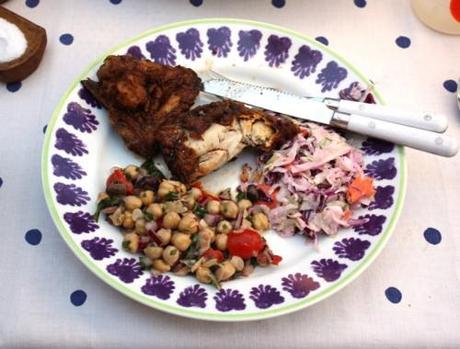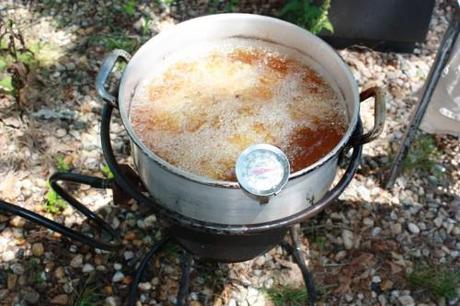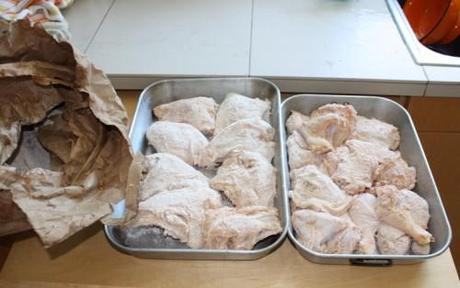
 There’s no secret to this recipe for fried chicken — it’s the quality of the bird. East Hampton’s Iacono Farm has been raising chickens in clapboard coops since the Truman administration. They (the chickens, not the Iaconos) spend their days scratching the dirt for bugs, blithely maintaining the pecking order under the sunny skies. Happy, healthy, delicious birds.
There’s no secret to this recipe for fried chicken — it’s the quality of the bird. East Hampton’s Iacono Farm has been raising chickens in clapboard coops since the Truman administration. They (the chickens, not the Iaconos) spend their days scratching the dirt for bugs, blithely maintaining the pecking order under the sunny skies. Happy, healthy, delicious birds.
The farm’s pens are adjacent to a tidy garage-like building that serves as both sales counter and abattoir. Call ahead, it will save time. The order will be wrapped and ready, the lively trip from cluck to pluck to skillet-ready completed. Or you can just avert your eyes while the chickens are eviscerated and cut up, which they do after they are weighed. They keep things very real at Iacono Farms.*


Frying big batches of anything is best suited to the great outdoors. En plein air reduces worry about splatters and such. This propane fueled burner accommodates shallow pots for regular uses and the tall pots needed for deep fat fried turkeys.
RECIPE FOR IACONO FARM FRIED CHICKEN
2 chickens cut into 8 pieces
1 qt. buttermilk
4 c. flour
2 T. salt and pepper
1 T. freshly ground black pepper
2 t. paprika
oil for frying: corn, vegetable, canola, Crisco — follow your heart. As long as it’s not olive oil, which doesn’t work for high temperature frying.

An hour before you plan to start frying remove the chicken to a colander in the sink. Most of the buttermilk will drip off, leaving each piece with just a slick coat.

Working with 4 pieces at a time, place them in the bag and roll down the top to close the bag but leaving lots of room to shake the chicken around.
Shake shake shake it so the chicken is coated on all sides. Continue until all the chicken is well coated.
Let the chicken rest for 30 minutes. This keeps the coating intact during cooking. You can let sit longer in the refrigerator until ready to cook.
Heat 4″ of oil in a large pot or deep fat fryer to 350°. When the oil is hot, fry the chicken pieces in like-sized batches, i.e. doing the big breasts in one batch, the smaller wings and drumsticks in another. Don’t crowd the pan.
Fry each batch 10-14 minutes depending on size. Keep an eye on the temperature careful stay in the 325-350° range. This chicken will be darker than the Colonel’s. If you have doubts about doneness test one piece by cutting into the thickest.
Remove the pieces to a pan lined with newspaper to drain. Sprinkle with salt while it’s still hot.
This chicken is delicious hot, room temperature hot hot or room temp or cold.
* Note special orders such as a capon, an old stewing hen or a bag of backs or gizzards require calling ahead. Years back Mom and I worked our way through five pounds of chicken feet, blanching and peeling the scaly outer skins off each talon before a long simmer. The resulting rich broth was very nice and something we’ll never do again. Another little-known delicacy is “unlaid eggs” which are as creepy as they sound. The egg cued up for tomorrow is almost full-sized and ready, the ones coming after progressively less so, continuing to little pea-sized balls. Eastern European recipes (and no doubt other cuisines as well) add these to hot soup as a kind of dumping. This is keeping very real indeed. And not going to do that again either.

